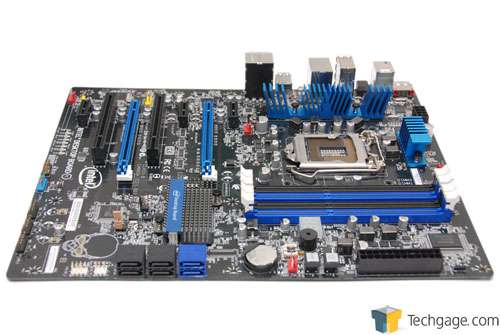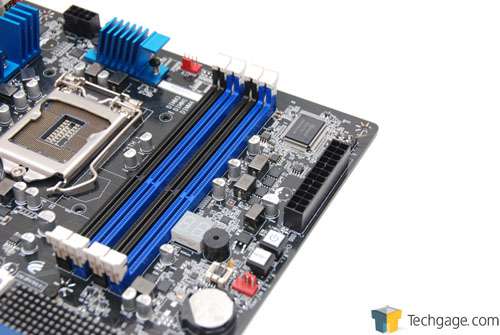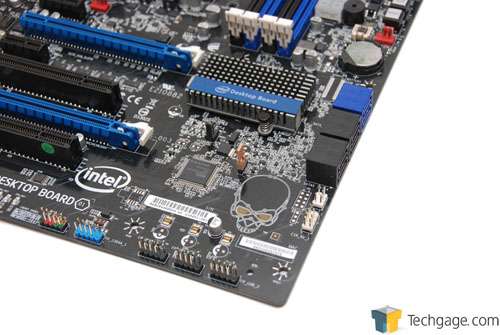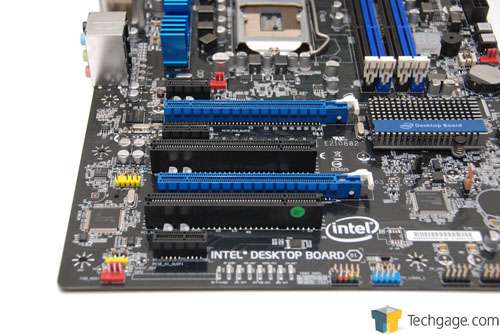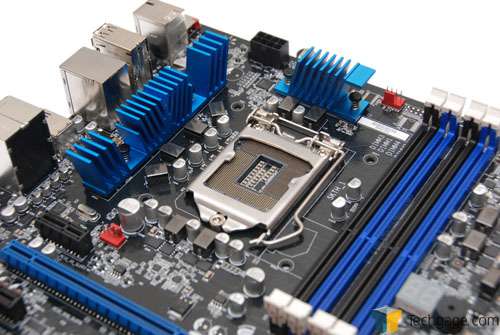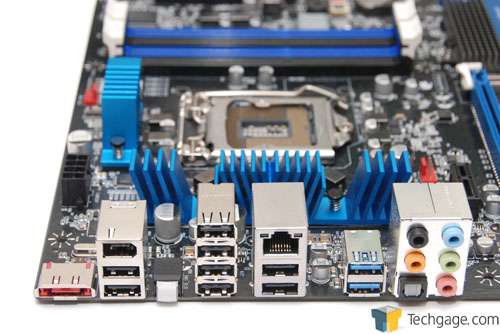- Qualcomm Launches Snapdragon 4 Gen 2 Mobile Platform
- AMD Launches Ryzen PRO 7000 Series Mobile & Desktop Platform
- Intel Launches Sleek Single-Slot Arc Pro A60 Workstation Graphics Card
- NVIDIA Announces Latest Ada Lovelace Additions: GeForce RTX 4060 Ti & RTX 4060
- Maxon Redshift With AMD Radeon GPU Rendering Support Now Available
Intel P67 Roundup: ASUS, GIGABYTE, Intel & MSI
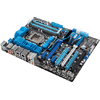
We’ve been a little short on motherboard content lately, so to kick things back into action we’re taking a look at four P67-based motherboards at once – all benchmarked using our newly revised test suite. The boards we’re looking at are the ASUS P8P67 Deluxe, GIGABYTE P67A-UD4, Intel DP67BG and MSI P67A-GD65.
Page 6 – Intel DP67BG
I’d have no qualm in backing up the fact that Intel’s boards tend to be the most stable on the market, but at the same time, there’s also little to talk about feature-wise. For some, the reasons behind that are what make the company’s boards so great – less bling, more of what’s important!
After I spent an entire weekend overclocking and tweaking this board last month, I was sold on the fact that Intel does indeed care about its motherboards quite a bit, and while they may not be for everyone, they can’t be wrote off just because Intel doesn’t pour as much into its marketing as the others.
Of the four boards we’re tackling in this article, the DP67BG is the most simple in both features and design, if that can’t be guessed already. The board isn’t loaded to the nines with on-board components, resulting in one of the cleanest-looking designs around. Simple heatsinks adorn the PWM area, and thanks to its other visual cues, this board comes off as industrial.
Like the other boards here, this one supports a dual-GPU setup – as long as it’s with AMD cards. Again, there is sufficient space between both PCI Express x16 slots, so airflow shouldn’t be a problem. There are three fan headers available aside from the CPU; one next to the DIMM slots, another at the bottom left-hand corner and another under the CPU socket (perfect for pumps like the one on our Corsair H70).
As nondescript as this board might appear compared to the others, this at least has on-board power and reset buttons, which GIGABYTE’s did not. Oh, and the same goes for the LED BIOS status display. Next to this setup is also the BIOS battery, ready to be pulled in the case of emergencies.
At the bottom right-hand corner we can see a variety of headers, including USB 2.0 and ATX, along with six SATA ports and a skull imprint that lights up when the board is powered on (a nice touch). In the event of a failed overclock, the small brown jumper seen here can be switched around in order to boot the board in safe mode, allowing you to change what you need to in order to get the board bootable again.
In addition to the dual PCI Express x16 slots, Intel has included a total of 3 PCI-E 1x slots and, like the others, 2x legacy PCI slots. “Oh these are the slots that never die…”
As is expected of such a “bare” board, there is a ton of room available around the socket, and all CPU coolers should install without issue.
At the I/O area we find 8x USB 2.0 ports, 2x USB 3.0, the usual complement of audio ports, and also an eSATA and LAN port. As a third option to resetting the BIOS to its default values, there’s a simple button found here that can be pressed before the PC is booted up.
A simple board in comparison, but I’m still a fan. Simple, but sweet. If only it had a more competitive price tag.
Support our efforts! With ad revenue at an all-time low for written websites, we're relying more than ever on reader support to help us continue putting so much effort into this type of content. You can support us by becoming a Patron, or by using our Amazon shopping affiliate links listed through our articles. Thanks for your support!




